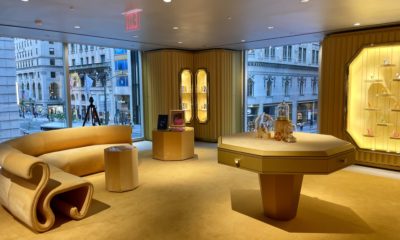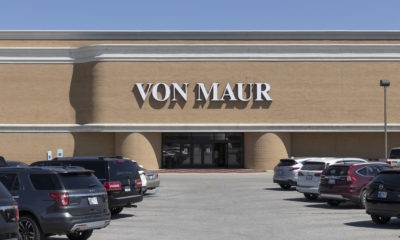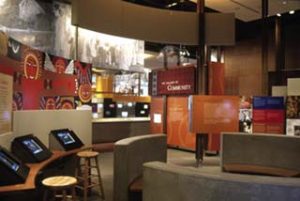Edwin Schlossberg is president of Edwin Schlossberg Inc. (New York), which he describes as a “multi-disciplinary design company that specializes in interactive exhibit design, museum master-planning, public information systems and entertainment sites.”
ESI's varied book of business in 25 years has ranged from designing exhibits at the Brooklyn Children's Museum and the John F. Kennedy Library, to designing informational interactive displays for the American Family Immigration History Center at Ellis Island and the Pope John Paul II Cultural Center on the grounds of Catholic University in Washington, D.C., to work at Hanna-Barbera Land for Paramount Parks. In almost all endeavors, Schlossberg has rejected the concept of life – education, entertainment, recreation – as a passive experience.
Occasionally, ESI's work spills over into retail. It designed Sony Plaza, and that brand's full retail and museum experience, in the 1990s. And it has recently finished the Reuters Experience in New York's Times Square, complete with a high-tech computer strip down the side of the building that displays news headlines 24 hours a day.
Schlossberg was born on New York's Upper West Side and earned a doctorate in science and literature from Columbia University. His interest in both design and interactivity stemmed from postgraduate work with inventor and philosopher Buckminster Fuller, who pioneered interactive concepts in education. He later taught environmental design at the California Institute of Arts and lectured on urban planning at Massachusetts Institute of Technology.
“I never set out to be a designer,” Schlossberg once said. “What I really was doing was thinking – and suddenly, people began to pay me for my thoughts.”
Advertisement
He is married to Caroline Kennedy. They live in New York with their three children.
Has retail design ever approached art for you?
Gertrude Stein said that “great art is irritation.” Stores that engage you and make you think and act differently are art-like, but the goals are different for art. Art seeks to transform the conversations with the past, present and future. Retail seeks to create contexts to enable you to find what you want and need.
How does design influence behavior?
Design is a process of communicating through objects, forms and words. If the communication is effective, it affects behavior.
What principles of “discovery” apply to retailing?
Advertisement
Retail should be more theatrical, more communicative, more exciting.
What can retailers learn from museums in terms of “display”?
Great museums create an environment in which the objects can be learned about and understood in the context of their use.
Why is interactivity failing as an in-store concept?
Because true interactivity really hasn't been tried yet. An interaction is the beginning of a relationship. And when that happens, the rest will work.
What is brick-and-mortar retail's best opportunity vis-á-vis the Internet?
Advertisement
Doing both well and making them integrated.
What is still the most Upper West Side thing about you?
My dining preferences: Barney Greengrass, H&H Bagels and Zabars.
Which Hanna-Barbera character do you most relate to?
One of the Smurfs.


 Headlines2 weeks ago
Headlines2 weeks ago
 Eric Feigenbaum7 days ago
Eric Feigenbaum7 days ago
 Headlines5 days ago
Headlines5 days ago
 Headlines1 week ago
Headlines1 week ago
 Headlines2 weeks ago
Headlines2 weeks ago
 Headlines1 week ago
Headlines1 week ago
 Designer Dozen2 weeks ago
Designer Dozen2 weeks ago















